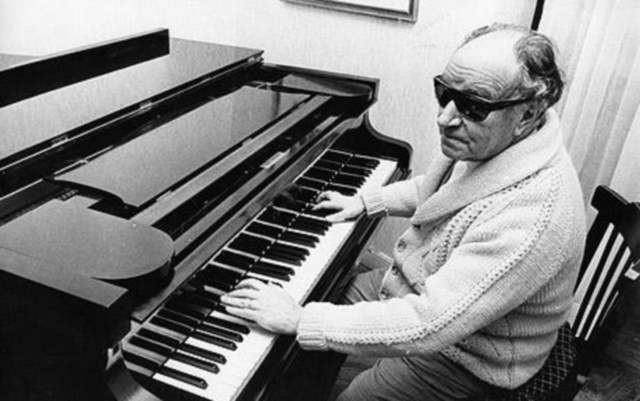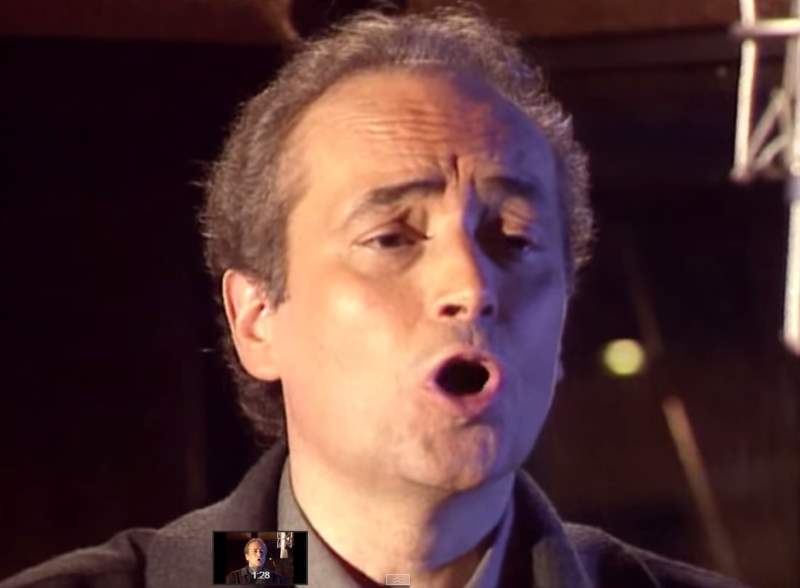Three great versions of “Concierto de Aranjuez“, a composition for classical guitar and orchestra by the Spanish composer Joaquín Rodrigo. The first version is performed by Paco de Lucia, the famous Flamenco guitarist. The second version is performed by the Spanish classical guitarist Narciso Yepes, and the third version is performed by the Australian classical guitarist John Williams.
1. Paco de Lucia version
Recorded live at Bulevar de la Casa de la Cultura de Torrelodones, Spain, in 1991. Joaquín Rodrigo himself was in attendance at the concert.
This 1991 release, recorded live at Teatro Bulevar de la Casa de la Cultura in Torrelodones, Spain, features Spanish composer Joaquín Rodrigo’s best-known composition, 1939’s “Concierto de Aranjuez,” performed by flamenco guitar legends Paco de Lucía and Rodrigo, along with the Orquestra de Cadaqués. Also featured is the Isaac Albéniz composition “Iberia,” recorded at Cinearte in Spain.
Musicians:
- Paco de Lucía (guitar)
- Nicoline Kraamwinkel, José Luis Novo, Maryke Van Kooten, Katherien Routley, Jacquie McCreadie, David Olmedo, Vincent Huerta, Hazel Mulligan, Janice Graham, Hozumi Murata, Cecila Romero, Ann Criscuolo, John Meisner, John Harding (violin)
- Andrew Simpson, Scott Rawls, Jonathan Barritt, Miriam Van Dixhorn (viola)
- Jorge Pozas, Nick Roberts, David Bucknall, Sebastián Kolowski (cello)
- Jaime Martín, Emily Beynon (flute)
- Joan Enric Lluna, Mark Withers (clarinet)
- Nigel Shore, Manuel Angulo (oboe)
- Benjamín Moreno, Tom Hoyt, Jonathan Barenham, Susan Dent (trumpet).
Audio Mixers: Miguel DeLa Vega; John Kurlander. Producers: John Kurlander, and Miguel Angel de la Vega.
2. Narciso Yepes version
“Narciso Yepes gave a most delicate account of Rodrigo’s Concierto de Aranjuez. The range of timbres he can produce, to contrast phrases and to shape them, is astonishing…” (Paul Griffiths -author on new music, writer, librettist, critic- 1974, The Times, London, 6 Nov., p. 11
Narciso Yepes was a renowned Spanish guitarist who recorded a highly acclaimed performance of Joaquín Rodrigo’s Concierto de Aranjuez. The Concierto de Aranjuez is one of the most famous and beloved guitar concertos ever written, and Yepes’ recording is considered to be one of the definitive performances of the work.
3. John Williams version
From BBC Proms 2005. BBC Symphony Orchestra conducted by Paul Daniel.
John Williams is widely regarded as one of the greatest guitarists of the 20th century, and his interpretation of the Concierto de Aranjuez at the BBC Proms in 2005 is considered to be a masterful and deeply expressive performance.
His technical virtuosity and emotional depth bring out the full range of colors and emotions in Rodrigo’s music, while the BBC Symphony Orchestra provides a rich and nuanced accompaniment that highlights the beauty and power of the piece. Overall, this performance is a testament to the enduring appeal and significance of the Concierto de Aranjuez in the classical music canon.
Joaquín Rodrigo’s Concierto de Aranjuez
Written in 1939, Concierto de Aranjuez is far and away Rodrigo’s (November 22, 1901 – July 6, 1999) best-known work, and its success established his reputation as one of the most significant Spanish composers of the twentieth century. Composed in early 1939, in Paris, amid the tensions of the impending war, it was the first work Rodrigo wrote for guitar and orchestra.
The instrumentation is unusual: rarely does the guitar face the forces of a full orchestra. Instead, the guitar is never overwhelmed, remaining the solo instrument throughout. Joaquín Rodrigo was born in 1901 in Sagunto, Valencia, Spain, and was blinded by diphtheria at three years old, which he later said turned him to an early life of music. Rodrigo studied music in Valencia and Paris. He began to study solfège, piano, and violin at the age of eight; harmony and composition from the age of sixteen. He was a brilliant pianist, but unlike many believe, he wasn’t a master at the guitar.

Movements of Concierto de Aranjuez
The concerto consists of three movements:
- Allegro con spirito – a fandango-like dance movement showcasing the intricacies and delicacies of balancing a guitar and an orchestra.
- Adagio – a slow movement with haunting Spanish folk tunes and beautiful harmonies.
- Allegro gentile – a gentile movement light on its “toes”.
Inspiration
The Concierto de Aranjuez was inspired by the gardens at Palacio Real de Aranjuez, the spring resort palace and gardens built by Philip II in the last half of the 16th century and rebuilt in the middle of the 18th century by Ferdinand VI. Aranjuez lies just 30 miles south of Madrid and is a year-round favorite with weekenders flooding out of the capital.
The work attempts to transport the listener to another place and time through the evocation of the sounds of nature. According to the composer, the first movement is “animated by a rhythmic spirit and vigor without either of the two themes… interrupting its relentless pace”; the second movement “represents a dialogue between guitar and solo instruments (cor anglais, bassoon, oboe, horn, etc.)”; and the last movement “recalls a courtly dance in which the combination of double and triple time maintains a taut tempo right to the closing bar.”
He described the concerto itself as capturing “the fragrance of magnolias, the singing of birds, and the gushing of fountains” in the gardens of Aranjuez. Rodrigo and his wife Victoria stayed silent for many years about the inspiration for the second movement, and thus the popular belief grew that it was inspired by the bombing of Guernica in 1937.
In her autobiography, Victoria eventually declared that it was both an evocation of the happy days of their honeymoon and a response to Rodrigo’s devastation at the miscarriage of their first pregnancy. It was composed in 1939 in Paris. Rodrigo dedicated the Concierto de Aranjuez to Regino Sainz de la Maza (September 7, 1896, in Burgos – November 26, 1981, in Madrid), a Spanish classical guitarist.
The Concierto de Aranjuez premiered in Barcelona in 1940, with Regino Sainz de la Maza playing the guitar. The concerto was an instant success, leading many musicologists to attribute Rodrigo for making classical guitar music popular.

Sources
- Joaquín Rodrigo on Wikipedia
- Concierto de Aranjuez on classicalmusic.about.com
- Ivo Pogorelić plays Beethoven’s Für Elise - July 25, 2024
- Telemann: Concerto for Recorder and Viola da Gamba [Bremer Barockorchester] - July 23, 2024
- Gershwin: Rhapsody in Blue [Lang Lang] - July 21, 2024


![Rodrigo: Concierto de Aranjuez [Narciso Yepes]](https://cdn-0.andantemoderato.com/wp-content/uploads/2023/12/Narciso-Yepes-Concierto-de-Aranjuez-Moscow-1980-1024x576.jpg)

Pretty music tchaikovsky AND KIROV BALLET .
WONDERFUL MUSIC CONCIERTO DE ARANJUEZ VERY EMOTIONAL
Thanks for watching, Maria!
If there is a place for expression, it’s this Concierto. Yepes’ version is a gift to all of us.